
AU 2003234757
HEAT GENERATOR APPARATUS
Inventor: BRITS LUDWIG FRANS EMMA ; CHRISTIE VICTOR JOHN
FIELD OF INVENTION
This invention relates to heat generator apparatus.
This invention has particular but not exclusive application to heat generator apparatus for harvesting wind power and for illustrative purposes reference will be made to such application. However, it is to be understood that this invention could be used in other applications, such as conversion of rotational motion to heat generally.
PRIOR ART
In the field of alternative or renewable energy technology, wind power occupies a credible niche in the partial replacement of fossil fuel usage Wind farms are well established in the United States and Europe, some installations approaching base load utility. Invariably, wind power is utilized one of three ways. In the first instance there are large capital intensive installations adapted to produce electricity for a grid. In the second instance there are variations on the traditional windmill theme of pumping water. In the third there are opportunistic DC electrical generators, typically for marine use and adapted to provide part of a mixed-charging regime for batteries in remote locations, usually in conjunction with solar panels and engine-driven alternator backup.
Small wind installations are of limited utility in the capturing of wind energy for domestic use. At low wind speeds the small DC outputs of wind generators are impractical for supplying power to anything other than storage batteries. At low wind speeds the start-up loads are also significant. At high wind speeds, the DC output must be regulated down, capping rotor load and resulting in even faster rotation as wind speed increases further. This wastes available energy as dissipated heat
DESCRIPTION OF INVENTION
This invention in one aspect resides broadly in heat generator apparatus including:
a non-conductive and non-magnetic support body having a plurality of magnetic elements spaced about a periphery thereof:
a non-magnetic, electrically and thermally conductive inductor body supported in close proximity to periphery;
heat exchange means associated with said inductor body; and
drive means effecting relative rotation between said support and said inductor whereby said inductor sequentially cuts the lines of force of said plurality of magnetic elements.
The support body and the inductor body may be configured as a rotor and a stator or as two rotors. In view of the inductor body being associated with the heat exchange means, it is preferred that the inductor body be static and that the support body rotate relative to it. The rotating support body may be configured as a disc, cylinder or a solid of rotation, the choice being at least in part configured according to the form of the inductor body.
The rotating support body is preferably formed of an engineering material selected to allow the mounting of the plurality of magnetic elements and having regard to the centrifugal forces to which the rotating support body and magnetic elements will be subjected It may be advantageous to avoid metallic fixings to avoid distortion of the magnetic fields. For example, the magnetic elements may be wholly or partially embedded in the material of the support body during the formation thereof.
In the case of disc-like support bodies, the magnetic elements are preferably disposed with like poles directed radially outward of the disc. The magnetic elements may be disposed with their outer pole faces shaped to conform to the surface of rotation of the support body, whereby the clearance between the pole surface and the inductor body may be reduced. The magnetic elements may be in diametrically opposed positions on the disc, particularly where the diameter of the disc is large relative to the significant extent of the individual magnetic fields. In the alternative, the positions of the magnets may be diametrically staggered to minimize pole-to-pole interactions across the disc.
The magnetic elements may be selected from permanent magnets and electromagnets. In the case of permanent magnets, the flux density of rare earth magnets makes this type of magnet desirable.
The number and spacing of the magnetic elements will be at least in part determined by the nature of the inductor. For example, the inductor may be configured to be located radially outward of a disc-like support body and extend partially about and clear of the circumference thereof. In practice it has been established that, for a support body of radius R and for eight permanent magnetic elements of circumferential extent 0.42R, the spacing on the support body between the pole faces is 0-32R. It has been empirically determined that an inductive body of circumferential extent of about 0.5R functions well.
The inductor body is preferably of aluminium or other material known to be capable of having circulating currents induced therein that may interact with a magnetic field. The inductor body may be disposed at the circumference of a rotating support body as above Alternatively, the inductor body may comprise a substantially horseshoe-shaped radial section whereby the edge portion of a disclike support body may pass through the reentrant of the inductor body in use.
In other embodiments the relationship between the support body and its magnetic elements and the inductor may be modified to relate to specific applications. For example, a low reactance shaft such as a stainless steel propeller shaft on a shaft driven vessel may support a cylindrical support member having magnetic poles arrayed about its cylindrical surface. In sailing vessel applications where the shaft freewheels under sail (that is, non-featherable propellers), or in powered applications, the inductive heat in the inductor body may be harnessed to heat water for reticulation, desalination or other purposes.
The drive means may take any form capable of effecting the relative rotation of the support body and the inductor body and overcome the inherent drag of extracting heat energy therefrom. In wind power applications, the drive means may comprise a direct or indirect drive from a wind turbine or the like.
It is particularly observed that the speed to output curve of the present invention admits to use of direct drive using simple wind driven elements. This particular application utilizes the observation that the start-up load is purely inertial and that the relationship between the heating effect and rotor speed is a very shallow curve approaching zero speed and shows an increasing braking force (and yield) with increasing speed from higher speeds. This is to be distinguished from dynamos which have significant electrodynamic forces to overcome from start-up, and alternators which run essentially dead at start-up until the field is energized. In addition, the act of regulating speed for output, and regulating voltage and/or current, all tend to dissipate energy.
In the light of the foregoing, the directly-driven nature of the above wind powered embodiments allows the use of the simplest of wind rotors. For example, an Arrhenius rotor requires no steering mechanism for keeping the head of the rotor to windward, and accordingly suffers no torque reaction from having one. Further, the apparatus functions independent of the direction of rotation.
It has been observed by the present applicant in test embodiments of the present invention that some advantage may accrue from varying the speed of rotation of the apparatus over time. In particular it is observed that in an electrically driven model the pulsing of the driving electric motor results in an improvement of efficiency regarding power consumption vs heat generated over time. By turning the motor power off and allowing the shaft speed to wash off, and then turning it back on, so allowing the shaft speed to return to it’s steady state rpm is enough to demonstrate the effect. It is expected in wind driven embodiments that natural variation in wind speed and thus rotor rpm will achieve an efficiency advantage over constant-speed apparatus.This in turn removes the need for a constant speed transmission system such as is provided by variable pitch rotors or continuously variable transmissions.
The heat exchanger means may utilize any fluid heat transfer medium and may be thermally integrated with the inductor block by any suitable means consistent with the maintenance of the circulating currents upon which the electrodynamic heating effect of the present invention depends. The fluid heat transfer medium may be liquid or gas. The fluid heat transfer medium may be used directly as in hot water or air supply, or may comprise an intermediate heat transfer medium such as high temperature oil or the like.
In the case of the preferred inductor blocks of aluminium or alloys thereof, the heat exchange may occur in passages provided in the inductor body per se, suitably manifolded to a circuit conveying the energetic fluid to reservoir or work. For example, heat exchange passages may be formed by a plurality of fins integrally formed with or assembled to the inductor block and encased in a preferably non-inductive cover which possesses coolant inlet and outlet means.
The energy harvested by apparatus in accordance with the present invention may be used to generate hot water or steam, for domestic or industrial use.


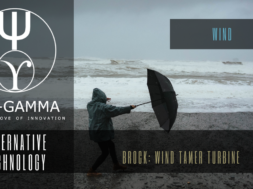
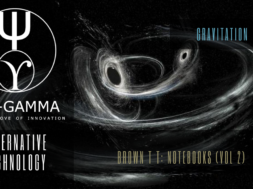




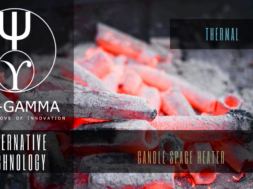
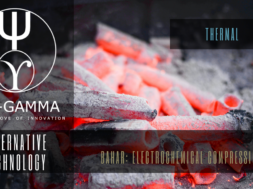
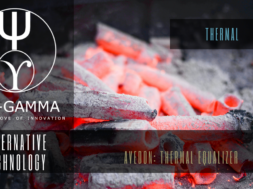
Эта познавательная публикация погружает вас в море интересного контента, который быстро захватит ваше внимание. Мы рассмотрим важные аспекты темы и предоставим вам уникальныеInsights и полезные сведения для дальнейшего изучения.
Получить дополнительные сведения – https://quick-vyvod-iz-zapoya-1.ru/